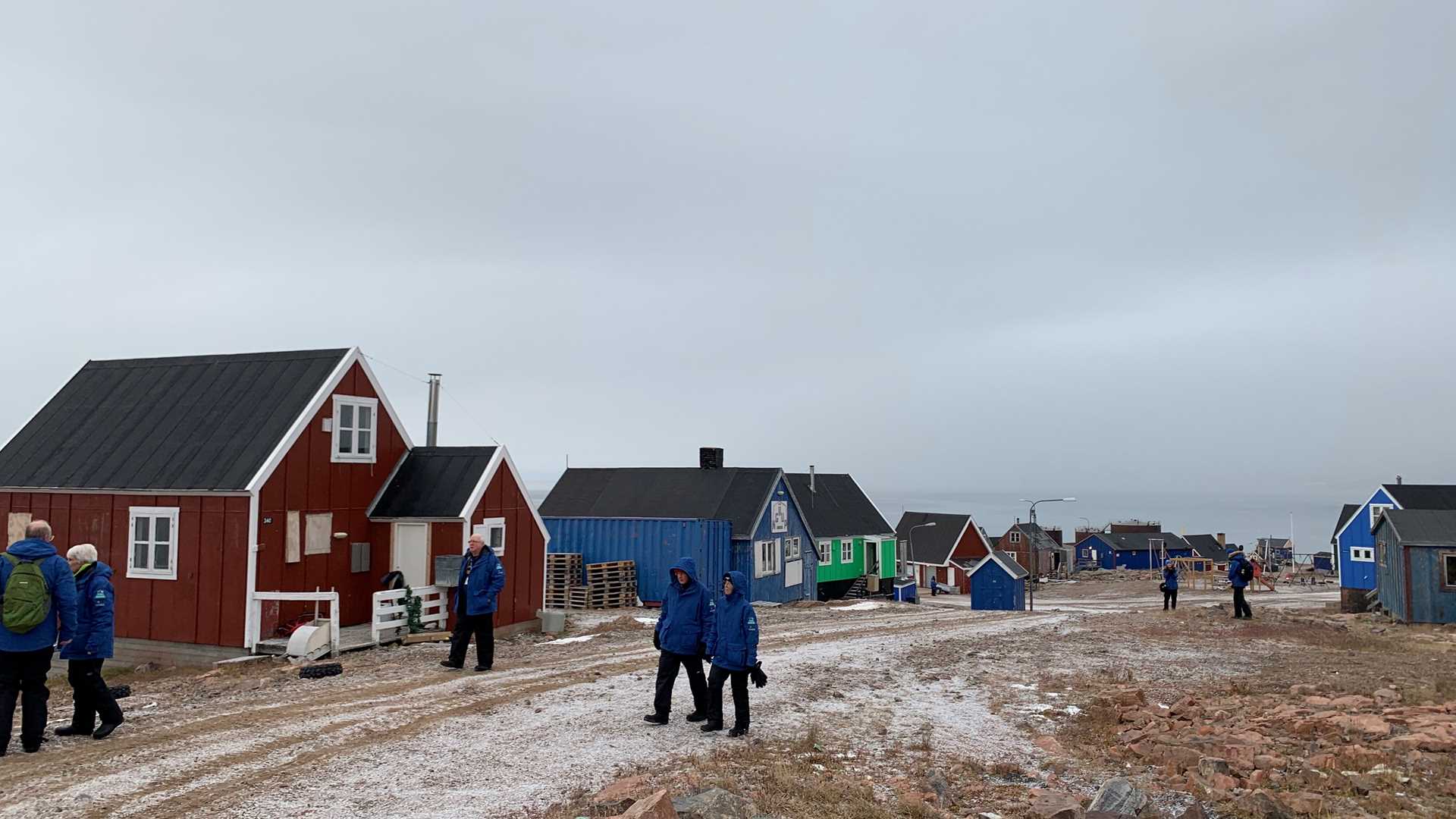This morning we visited our first Greenlandic settlement on this incredible expedition. Ittoqqortoormiit, meaning “Big-House Dwellers,” has a population of roughly 345 people and is known for being one of the most remote settlements on the planet.
We were free to roam this colorful little town. We visited the local museum, a beautiful church where we saw thread spun from muskox hair caught by the local villagers, and the tourist information center where some of the braver amongst us sampled muskox meat and had the opportunity to buy souvenirs from the gift shop. We even got to see the local Greenland working dogs getting fed seal meat close to our wet landing spot on the beach.
A walk around this remote Greenlandic settlement allowed us to appreciate a very different way of living, which starkly contrasts to that of how most of us live and see the world.







